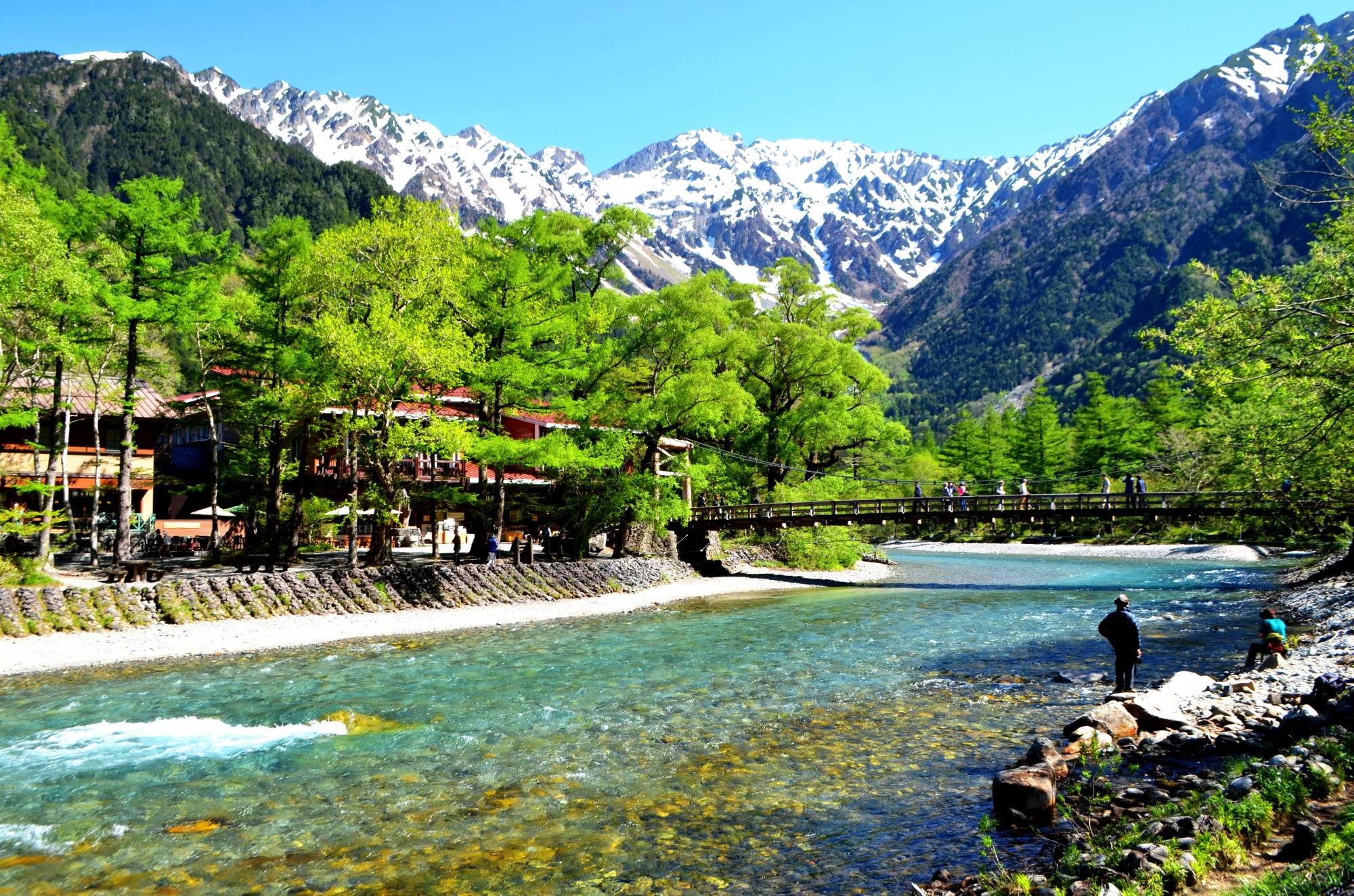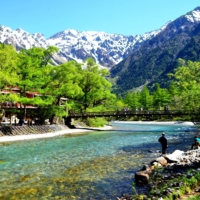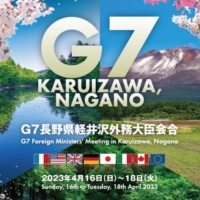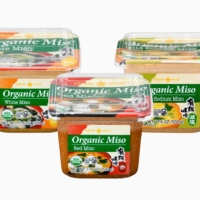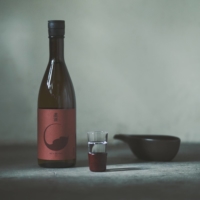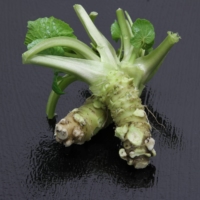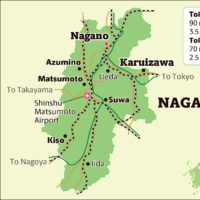Nagano Prefecture is known for its mountains, hosting part of “the Japan Alps,” a term coined by a British man during the Meiji Era (1868 to 1912). Mountain ranges above 3,000 meters stretch north to south through central Japan over six different prefectures, drawing climbers, mountain lovers, skiers and outdoor enthusiasts throughout the world to one of the most scenic destinations in Japan.
Karuizawa, where the G7 Foreign Ministers’ Meeting will be held from April 16 to 18, is one of Japan’s leading getaway destinations close to Tokyo. To its west are the Japan Alps, which can be explored through a variety of enjoyable trekking and climbing courses for both beginners and advanced climbers. After a day of exploration, one can rest at various hot spring resorts, such as Matsumoto’s Shirahone Onsen. In winter, people can enjoy Nagano’s abundant ski resorts, such as Shiga Highlands, one of the largest ski areas in Japan, known for its abundant snowfall, or visit Jigokudani Snow Monkey Park, famed for the animals’ bathing habits.
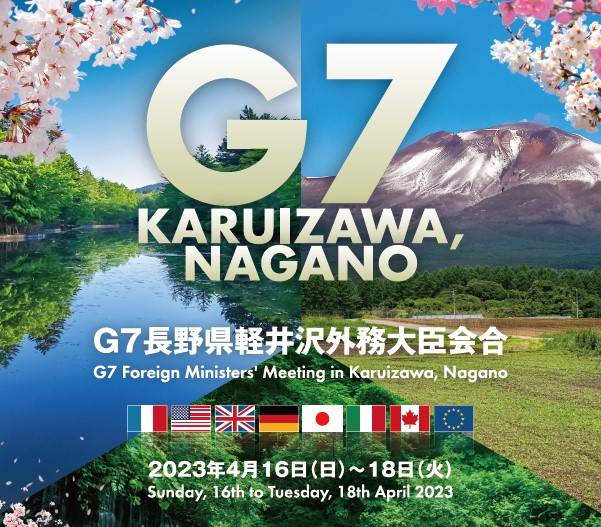
Nagano Prefecture has nine national parks and quasi-national parks. Among them is Kamikochi, one of only two places in Japan designated as both a Special Place of Scenic Beauty and a Special Natural Monument by the Cultural Affairs Agency. Mount Yarigatake and Mount Okuhotaka in the Northern Alps, as well as Chubu Sangaku National Park, which straddles multiple prefectures, are also popular destinations.
Norikura Highlands
The Norikura Highlands are at the eastern foot of 3,026-meter Mount Norikura, about 80 minutes by car from central Matsumoto in Chubu Sangaku National Park. In June 2022, a new, easy-to-follow hiking and mountain biking trail called Joyful Walks Norikura and the Norikura Community Mountain Bike Trails was created there by improving an existent hiking trail. It is the first public trail in a Japanese national park to permit the use of mountain bikes.
Matsumoto is now aiming to become a sustainable city, since it has been selected by and receives government funding from the environment ministry as a leading decarbonization region. The Norikura Highlands were specifically selected to be a “zero carbon park,” or one that is undertaking advanced decarbonization efforts.
“In March 2021, Matsumoto started tackling this aim under the slogan ‘Norikura Kogen Miraizu’ (roughly translated as ‘Future Map of Norikura Highlands’). The city plans to build a small hydroelectric power generation facility, and is now considering introduction of environmentally friendly means of transportation, such as e-bikes and electric buses, in the Norikura Highlands,’’ said Hideyuki Ishida, deputy director of Matsumoto’s Alps Resort Development Division.
Retreat locations
For 17 consecutive years, Nagano has been the top location that people want to move to. According to Foreign Minister Yoshimasa Hayashi, Karuizawa was chosen as the venue for the G7 Foreign Ministers’ Meeting due to its rich natural environment and suitability for open discussions among the ministers.
Matsumoto meanwhile promotes “retreat workations,” where people can concentrate on remote work in a quiet environment and let both body and soul relax, surrounded by beautiful nature, and with meals prepared with locally produced ingredients, before taking a dip in the hot springs.
Fermented-food culture
Nagano has one of the highest healthy life expectancies in Japan; it was No. 1 for women and No. 2 for men in 2020. One of the factors that is said to contribute to this is the many local specialties, such as fermented foods, vegetables and fruits.
As for fruit, Nagano is one of the top producers of apples, grapes, pears and peaches in Japan. Among the typical types of fermented food is miso, and Nagano produces the most miso in Japan, a variety called Shinshu miso. Hikari Miso Co., located in Shimo Suwa in central Nagano, is Japan’s largest exporter of organic miso.
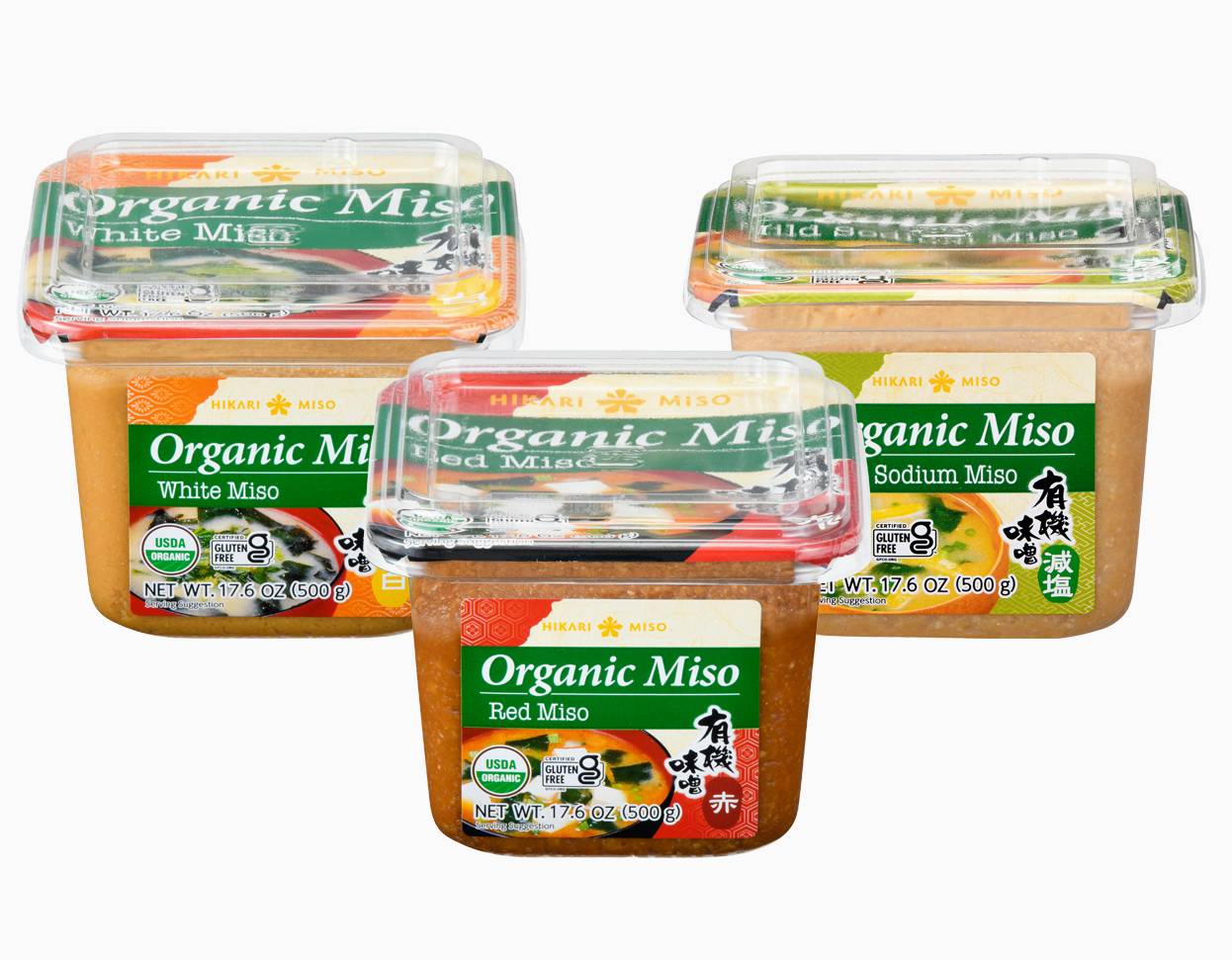
“The characteristic of Shinshu miso is that it has a balanced flavor that can be enjoyed by people of all ages, and can suit all kinds of foods,” said Yoshihiro Hayashi, president of Hikari Miso. He said that lately, interest in fermented food, especially miso, has deepened among not only chefs from abroad, but also foreigners in general because it is said to be “healthy and good for the intestinal environment.”
“I would like people from all over the world to enjoy miso by using it according to the habits and preferences of each country,” he added, saying the company is making efforts to spread the charm of miso by attending food expos abroad and introducing its merits to foreign people.
Considered a superfood from Nagano’s Kiso region, sunkizuke are healthy, traditional and unique fermented pickles made without using salt from an indigenous variety of red turnip. Sunki soba, which features sunkizuke on top of warm soba, can be enjoyed at soba restaurants in the Kiso region and surrounding areas.
Sake breweries
Blessed with clear streams and cool weather that are ideal for sake brewing, the Suwa area is home to many breweries, with Nagano Prefecture ranked second in Japan – trailing just behind Niigata Prefecture – in number of sake breweries. Koshu Kaido avenue in Suwa hosts the Suwa Gozo (five breweries) of Maihime, Reijin, Honkin, Yokobue and Masumi.
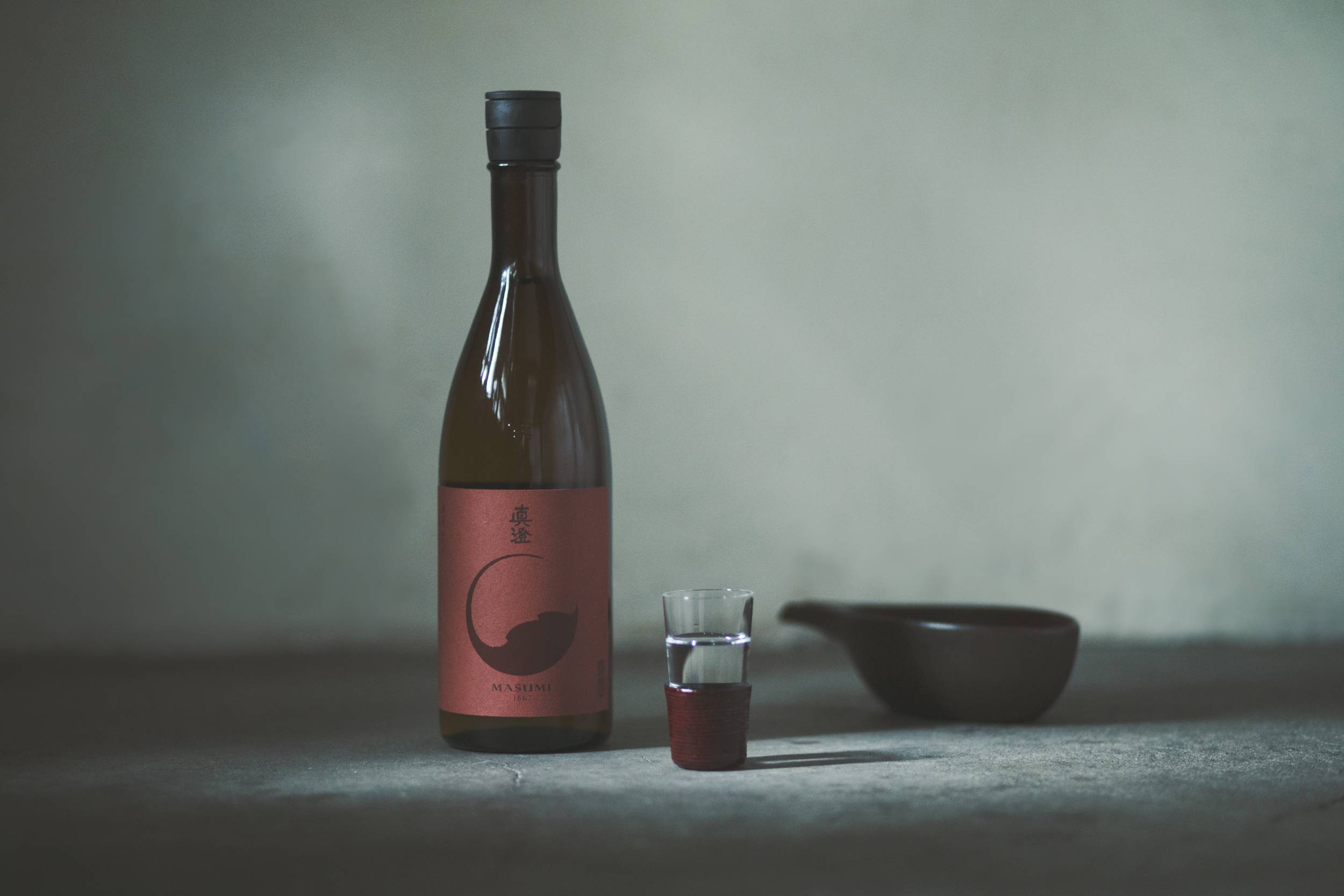
Miyasaka Brewing Co., where Masumi sake is brewed, was founded in 1662. The name Masumi comes from the Mirror of Truth, a treasure at nearby Suwa Taisha shrine. It is known as a brewery where the famous No. 7 yeast, the most used yeast in sake production, was born. No. 7 yeast does not have a distinctive uniqueness, but is characterized by strong fermentation power and the ability to produce well-balanced sake. President Naotaka Miyasaka says he thinks the high quality of sake they brew owes of course to the water, but also to the “high level of technical skills, the earnestness of the people in Nagano who struggled and made every effort in the bitter cold winter weather, in trying to develop the industry.”
The heart of wasabi
Nowadays, it is often difficult to obtain authentic, naturally grown or farm-grown wasabi, since horseradish is the main ingredient of the prepared wasabi in tubes sold at supermarkets. The Daio Wasabi Farm in rural Azumino near Matsumoto is Japan’s largest wasabi farm, with 15 hectares under cultivation. The farm’s wasabi is also renowned for being dedicated to Ise Jingu Shrine, one of the principal Shinto shrines in Japan.
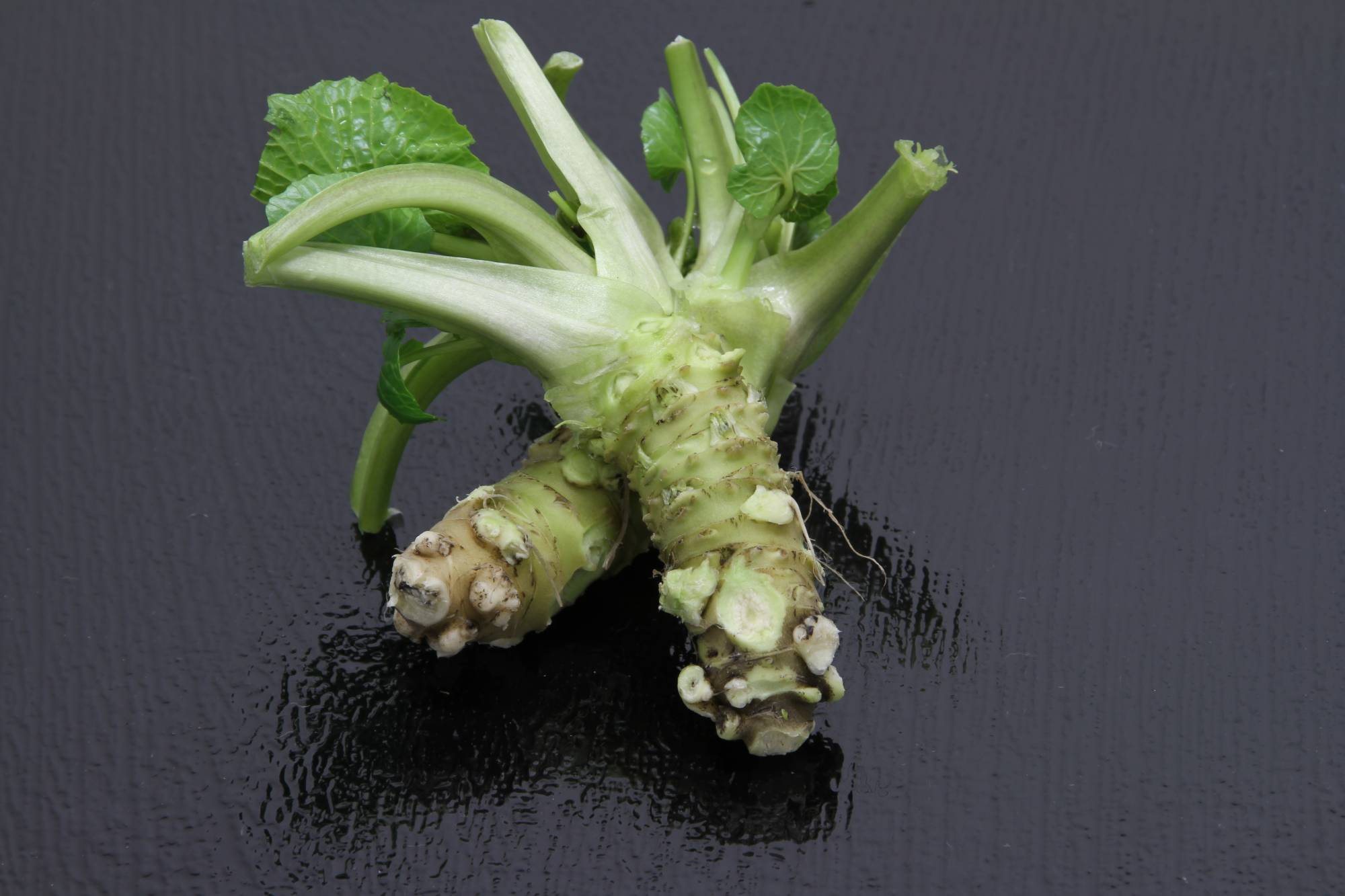
“Nagano Prefecture is an ideal area to cultivate wasabi. The quality of wasabi is determined by the quality of the water in which wasabi grows,” said Hideyuki Tezuka of the farm’s agricultural department.
He said the farm has exactly the right environment for that, where crystal-clear water from the melting snow of the Northern Alps flows underneath the farmland and gushes out to nourish the crops.
According to Tezuka, the wasabi they cultivate has excellent flavor due to the high quality of water.
“We want to continue making good wasabi, and pass it on to the next generation,” he said. “The farm welcomes many international visitors, and we want to be an industry that can connect with the world,” he added.
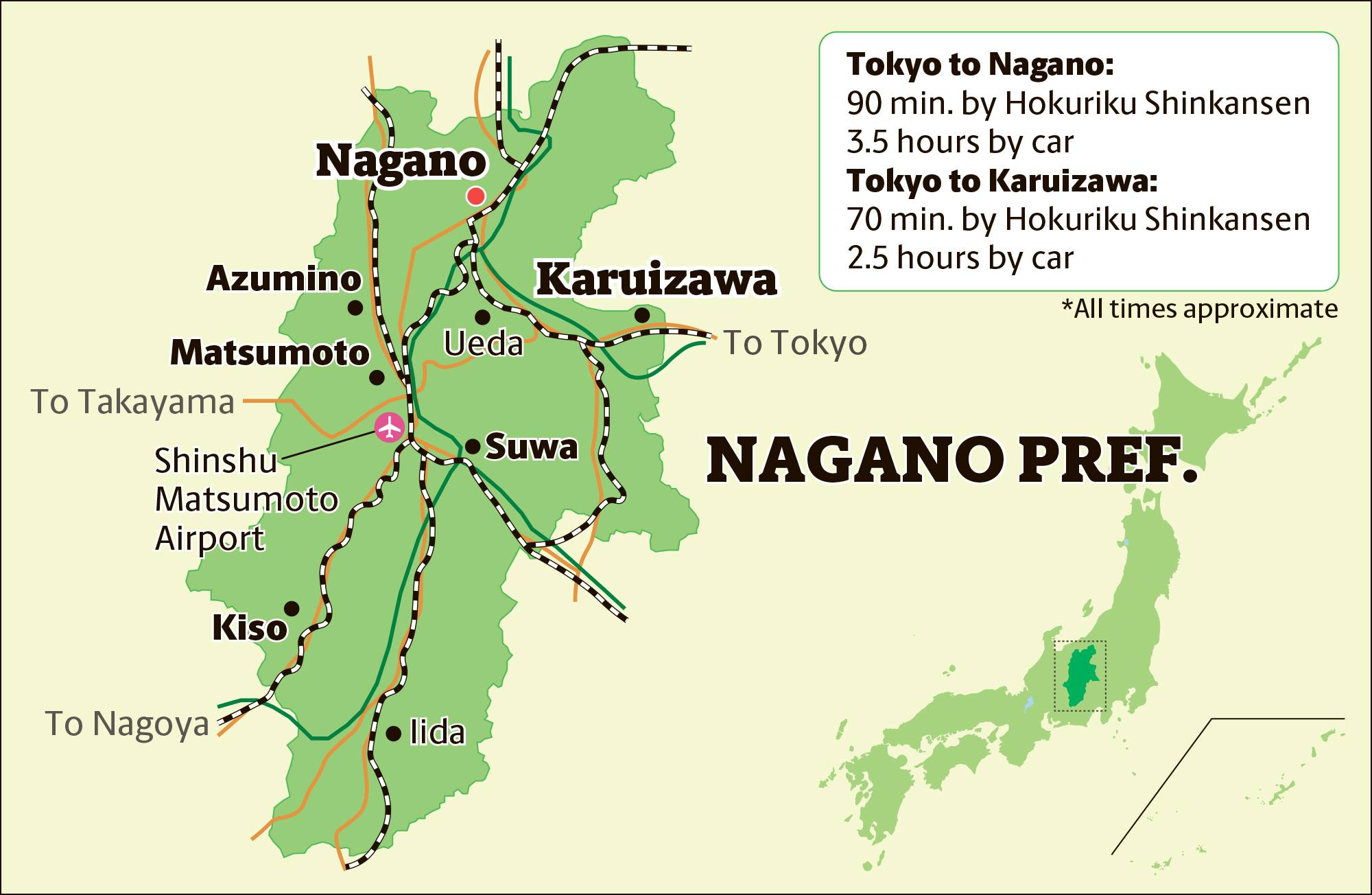
This page is sponsored by Nagano Prefectural Government.
Download the PDF of this Nagano tourism special.



